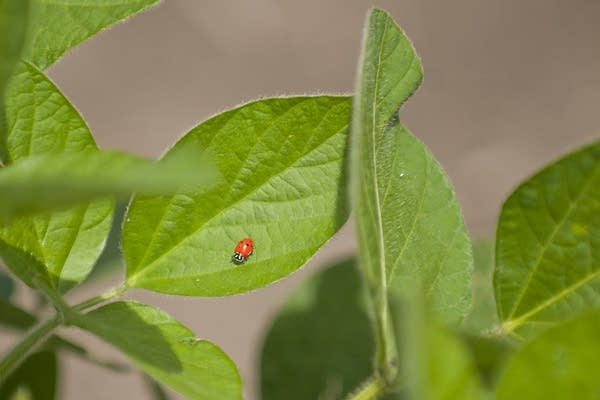Study finds bug diversity cuts down on crop pests

A new study shows that farmers may need to spend less on pesticides once they understand how biodiversity works in farm fields. Here, a ladybug walked across a soybean lean at a southern Minnesota farm earlier in July.
Jackson Forderer for MPR News
Go Deeper.
Create an account or log in to save stories.
Like this?
Thanks for liking this story! We have added it to a list of your favorite stories.


